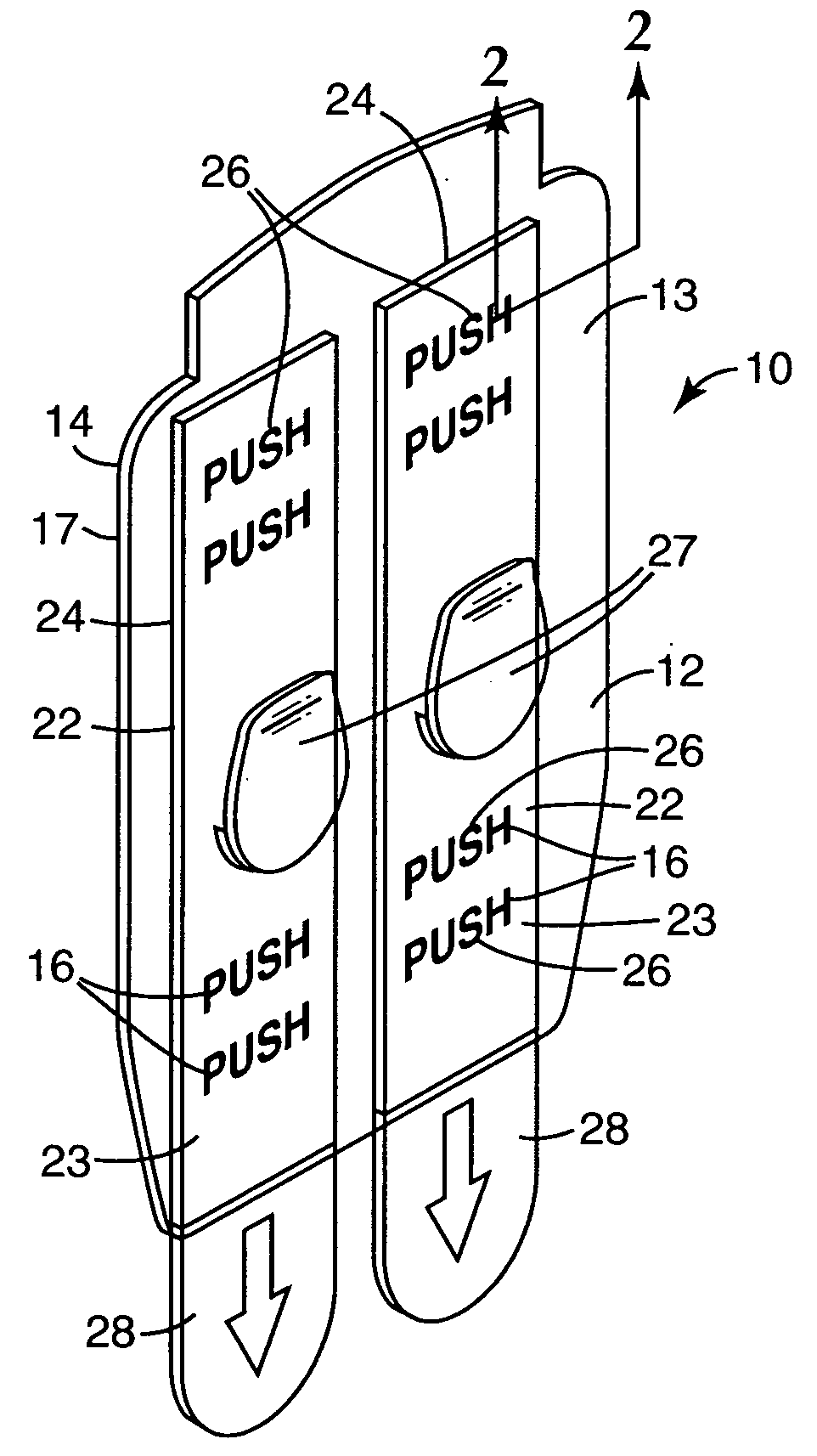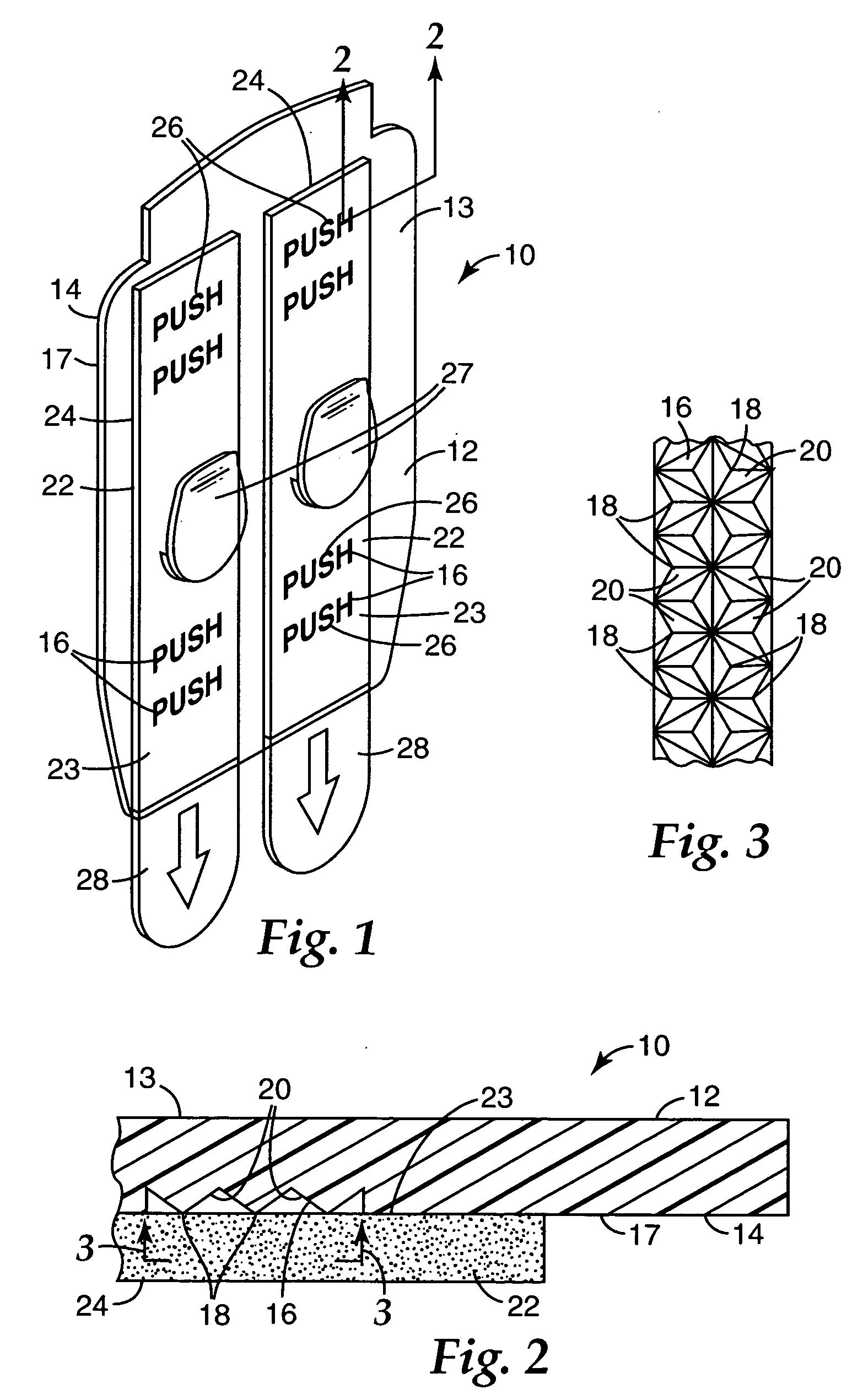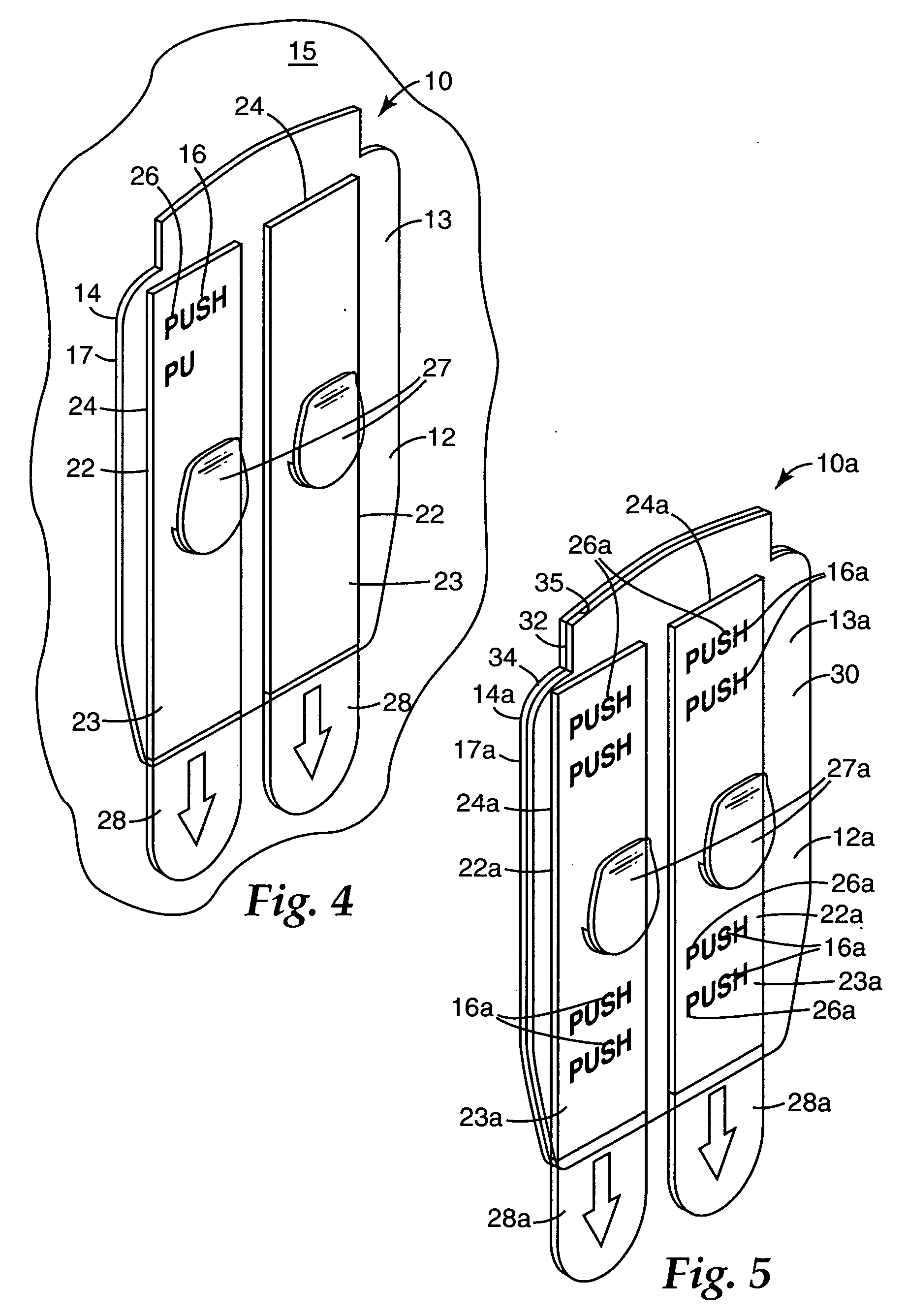Pressure indicating structure
- Summary
- Abstract
- Description
- Claims
- Application Information
AI Technical Summary
Benefits of technology
Problems solved by technology
Method used
Image
Examples
first embodiment
[0029] Referring now to FIGS. 1 through 4 of the drawing there is illustrated a pressure indicating structure 10 according to the present invention that can be releasably adhered to a surface 15 (see FIG. 4).
[0030] Generally, the pressure indicating structure 10 comprises a translucent or transparent polymeric sheet or plate 12 having opposite first and second major surfaces 13 and 14. A portion 17 of the second major surface 14 of the plate 12 is planar. The plate 12 has reflective structure 16 defining non-planar portions of its second surface 14, which reflective structure 16 is in the shape of indicia 26 (i.e., the words “PUSH” as illustrated). The reflective structure 16 reflects back through the first surface 13 at an observation angle in a predetermined range of angles with respect to the first surface 13 (e.g., at an observation angle in the range of about 60 to 90 degrees with respect to that first surface 13) a visually significant amount of the light entering the plate 12...
third embodiment
[0041] Referring now to FIGS. 6 through 8 of the drawing there is illustrated a pressure indicating structure according to the present invention generally indicated by the reference numeral 40.
[0042] Generally, the pressure indicating structure 40 comprises (1) a stiff but flexible translucent or transparent sheet 42 having opposite first and second major surfaces 43 and 44, reflective structure 46 defining the second surface 44 of the plate 42 for reflecting back through the first surface 43 at an observation angle in a predetermined range of observation angles (e.g., 60 to 90 degrees) with respect to the first surface 43 a visually significant amount of the light entering the plate 42 through its first surface 43. The reflective structure 46 (see FIG. 7) comprises a multiplicity of parallel elongate peak portions 48 and recessed portions having recessed surface portions 50 of the second surface 44 defining recesses from the peak portions; and (2) a deformable layer 52 comprising p...
fourth embodiment
[0048]FIGS. 9 and 10 illustrate a pressure indicating structure according to the present invention generally indicated by the reference numeral 60.
[0049] Generally, the pressure indicating structure 60 comprises a translucent or transparent polymeric sheet or plate 62 having opposite first and second major surfaces 63 and 64. A portion 67 of the second major surface 64 of the plate is planar. The plate 62 has reflective structure similar to the reflective structure 16 of the pressure indicating structure 10 defining non-planar portions of its second surface 64, which reflective structure is in the shape of indicia 66 (i.e., the indicia “5 PSI, 10 PSI, 15 PSI” etc. as illustrated). The reflective structure in the shape of the indicia 66 reflects back through the first surface 63 at an angle of observation in a predetermined range of angles of observation (e.g., 60 to 90 degrees) with respect to the first surface 63, a visually significant amount of the light entering the plate 62 thr...
PUM
 Login to View More
Login to View More Abstract
Description
Claims
Application Information
 Login to View More
Login to View More - R&D
- Intellectual Property
- Life Sciences
- Materials
- Tech Scout
- Unparalleled Data Quality
- Higher Quality Content
- 60% Fewer Hallucinations
Browse by: Latest US Patents, China's latest patents, Technical Efficacy Thesaurus, Application Domain, Technology Topic, Popular Technical Reports.
© 2025 PatSnap. All rights reserved.Legal|Privacy policy|Modern Slavery Act Transparency Statement|Sitemap|About US| Contact US: help@patsnap.com



